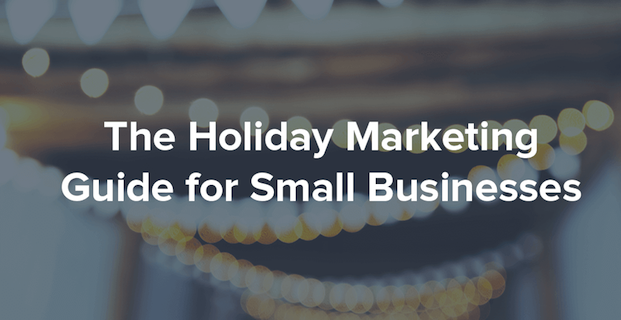by Guest Blogger | Feb 14, 2017 | Social Media
Use Social Networking to Boost Website Traffic
On its own, writing stellar content for your website isn’t going to make you any money. You need to figure out a way to attract potential clients to your website, who can be converted into dollars. This is the ultimate goal of every business.
SEO stands for “search engine optimization,” and it’s exactly what it sounds like. SEO measures how optimized your website is for the search engines that offer it up when someone types in a related search query. SEO is a huge factor in making sure you get traffic to your site — and more specifically, the right kind of traffic, people who are looking for you to solve their problems or answer their questions.

If your website isn’t generating a profit, then you need to ask yourself some hard questions — for example, what benefit does it really have for your business? No need to panic if you’re still waiting for a breakthrough; you’ll find the most important SEO factors below, along with some hands-on techniques that you can put to use right away to increase the traffic to your website. So, without further ado, read on to discover how to increase your website traffic with SEO tips.
Promotion Is King
One way to promote your website is by paying for online ads in hope of snatching a client once they land on your page. This model can be a huge money pit. And as soon as you stop paying for online ads, usually the traffic to your site drops like a rock. It’s also frustrating because it can cost more to lure people to your website than the revenue they bring in. This is the reason to stop paying for traffic and get people to be interested in your website organically. In other words, attract people because of your content, not because of your ads. The most rewarding solution to paid marketing is content marketing or blogging.
While it’s easier said than done to “just create great content,” it’s possible to build on that concept. The truth is that there’s way more to SEO than just writing content. One piece of the puzzle is attracting attention by proactively positioning your articles to be seen by your audience. It’s really no different from dating. You can be the best-looking person with all sorts of positive attributes. But if you never leave your home, you won’t meet other people to date!
The Real Purpose of Content Marketing
Even if you attract a boatload of visitors, it means nothing to your business unless those visitors become paying clients. Getting thousands of likes and shares for well-written content isn’t your number one goal. The real purpose of any website is to support your domain authority — and, let’s be honest, to make you money.
Most of your visitors who become clients typically look for answers to questions about your industry or about your business. For example, they might search for the term: “homes for sale in Asheville” or “best dentist in New Jersey.” It can be difficult to rank for these types of search terms as the competition can be fierce. But by supporting your website pages, linking to them from your blog, you can help them to rank higher.
What Drives SEO?
In the past five years, Google has totally revolutionized how their algorithm works — how they decide how to serve up the list of search results. Many SEO techniques that worked before have had to be abandoned or changed to fit new standards. Today, there are at least 200 factors that affect the rankings of a website. It’s still generally agreed among SEO experts that having inbound links from other websites helps rankings.
Keep in mind that Google doesn’t like websites that it catches manipulating their rankings by creating untrustworthy (or “spammy”) links back to their site. Link-building still exists, though, and it’s a vital part of SEO. But by all means, you must make sure that the links are pointing towards your site from a credible source with a legitimate reason.
After all, Google is right about the value of creating good content to rank your website. What they forgot to tell you is that good content is only one part of the puzzle. Getting other people to link to your articles is the mountain that needs to be climbed. Lacking the endorsement of other websites is what’s keeping your website from being ranked on page one of Google.
Promote Your Content Like Your Life Depended on It
One way to get others to link to you is by creating such amazing content that it gets picked up by others — and it goes “viral.” This approach is known as the hope-and-pray method. Usually, it’s a very unreliable way of running a business.
You can easily turn blogging into a full-time job and write content until your face turns blue. But unless you already have an established group of followers to promote your content or an everlasting bank account to pay for marketing — you need to take the matter into your own hands to get others to talk about you through promotion.
Finding Online Friends with Benefits
Promoting your content through social media is an affordable way of helping others find out about your work. But you’re setting yourself up for failure if you think that social media is all about you. The secret to establishing any friendship is to look out for the other person’s best interest ahead of your own. This concept works both offline and online. One of the best ways to have your content to be picked up by others is to share their content first.
Becoming friends with influencers in social media can be meaningful for your website’s ranking. Be generous by linking to other bloggers with quality content that’s relevant to your topic. Sharing their content with your audience is most certainly going to be reciprocated.
The topic that you write about doesn’t matter at all. As long as it’s related to your industry, it’s going to be fairly straightforward to dovetail others’ references to expand your own article. The three most popular best practices to link out to other websites from your own content are:
- Hyperlink from within the content
- Provide a list of additional resources
- Write a roundup post about a topic
As an example, curate a collection of articles into one round-up article called: “The Best Plumbing Blog Posts” of the past year. It may turn out to be a huge draw. People like a bunch of information in one place; you can put it at their fingertips.
The Key to Making Content Marketing Work
By using content marketing sites and by bookmarking sites you find, your articles can get a boost in the search engines. A favorite content marketing site is Scoop.it. It’s a powerful platform for making your content more visible. As an example, you can summarize content about a topic, add extra perspective to the topic and post it on the page with a link pointing back to the original post.
The key to getting SEO value out of using the above platforms is adding your own comments to create unique content. It’s not enough to copy and paste a link on the page. You can’t just grab a piece of the original content and use it for yourself. To be acknowledged by Google, you still have to satisfy one of their many requirements by creating your own unique content. Using these two content marketing sites may be one of the best SEO strategies you can put to use right away.
Start Ranking Today…
As you can see, there are many different ways to giving your website an SEO boost. Writing content that people crave is one way. Learning how to promote it properly through social networking is another. Doing both will propel your site’s ranking.
There’s no doubt that it takes a great amount of time and effort before you see the needle moving. But by taking one step at a time and coming up with a plan, you’ll end up on the top of page one in a Google search. Start writing today — and start promoting tomorrow.
Ray Access is a content marketing firm that delivers targeted words to empower your business. Contact us about your specific project to receive a quote or discuss your needs. We write website copy, blog posts, e-newsletters and more. Everything we do is thoroughly researched, professionally edited and guaranteed original.
by Guest Blogger | Jan 11, 2017 | Small Business Advice
4 Steps for Decoding the Productivity Myth
As business owners, we’re all impatient.
In our always-on, agile, tech-obsessed society, we want what we want and we want it yesterday. We depend on fatter pipelines, fuller funnels and more prospects. And the only way to meet the rising demand is to work longer hours, without breaks, and stay connected at all times. That’s the productivity myth.

Email Has Become Ubiquitous
Every time we hear the chirp of our smartphone singing in a new email, we jump to respond. We check it in bed, at the dinner table, in the park with the kids and on family vacations. A 2012 study by the Center for Creative Leadership found 60 percent of smartphone-using professionals were connected to the office for an average of 72 hours a week.
We’ve become narcissistic drones, we’re told, lacking the will power to look away from the soft glow of our iPhone 7s. We’re desperate to stay at the center of attention and frantic to remain reachable at all times.
While it’s a productivity myth, it’s also absolutely true that many of us can probably lay off the social media frenzy and not miss a beat. No one needs to know what you had for lunch, second lunch, dinner, snack or your 2 AM fridge-raid. But it’s becoming overtly clear the workplace demands propel a huge portion of the anxiety-induced phone-glancing. But social media isn’t what this is about. It’s an email obsession.
4 Steps to Slow Down & Maintain Productivity
When we slow down, we’re labeled slackers. We’re led to believe we’re doomed to get less done. We slow down, but the world races forward, leaving us in the dust. But staying in the perpetual “on” position is completely contrary to everything we know about what makes it possible for humans to perform at their highest level. And that busts the productivity myth.
- The science of a slowdown
The human body is hardwired to pulse — moving naturally through periods of higher and lower alertness. Nathaniel Kleitman, the sleep researcher who figured out the basic rest-activity cycle more than 50 years ago, said we move progressively through five stages of sleep each night, each lasting around 90 minutes. But did you know he also found our bodies operate by those same 90-minute rhythms during the day — and not just physically, but also mentally and emotionally?
Our bodies send us physiological signs when we need a break — like fidgetiness, hunger, drowsiness and loss of focus. But in general, we tend to hush them. Instead, we find artificial ways to pump up our energy: caffeine, sugary snacks and even our body’s own stress hormones, like adrenalin, noradrenalin and cortisol.
- The cycle of success
The modern model for success is broken. The idea of hunkering down for hours in front of a computer screen, plugging away all day, answering emails immediately, even late into the night, and working until you drop isn’t helping you get more done. That’s the real productivity myth. What are you giving up by working so continuously? Are you able to think as clearly and creatively? Do you produce the same quality of work in the tenth or twelfth hour of a work day as you do in the second or fourth?
Our bodies are designed to cycle. The patterns of organic labor are meant to shape our email productivity. Burned-out, neurotic employees who can’t unplug are neither productive nor creative. We need “off” time to produce a better “on” time. “On” is impossible without “off.”
- Sprint and rest
The paradox isn’t in the sprint, but rather in the rest. While it seems almost counterintuitive, the secret to sustainable greatness in email productivity is incorporating rests into your work day. Make that your new productivity myth.
Work in sprints — highly focused for short periods of time, with breaks built in — instead of being partially focused for longer periods of time. Slow down. Think about what you’re doing and how you’re doing it to produce higher quality results.
We all know your inbox is the mortal enemy to email productivity, but use it to increase your productivity. Work in 90-minute sprints, punctuated by 10- to 15-minute rests in your inbox. But insist on predictable time off, as well — evenings and weekend periods where you’re out of bounds.
- Set boundaries
Set firm boundaries to avoid allowing your email to become a sprinting rest. Email is incredibly addictive, and when you’re in it, it’s possible to get sucked into it for the rest of the day. Just as you should for your sprints, create a hard stop in your schedule for your rests.
Ray Access is a content marketing firm that delivers targeted words to empower your business. Contact us about your specific project to receive a quote or discuss your needs. We write website copy, blog posts, e-newsletters and more. Everything we do is thoroughly researched, professionally edited and guaranteed original.
by Guest Blogger | Dec 13, 2016 | Small Business Advice
Small Businesses Need Help This Time of Year
The holidays are fast approaching. Are you ready? If you’re not, it’s time to get started. Shoppers are most active during holidays and eagerly looking for the best propositions every year. And small businesses that are ready for it will win out over the stragglers.

Besides getting an early start, here are some other ways to make sure this is a successful holiday season for your small business:
Optimize Your Mobile Site
Mobile holiday shopping increased by about 60 percent in 2015 vs. 2014. Marketers are arming themselves with mobile strategies and there’s no reason why small businesses shouldn’t be on board. Here are some important factors in mobile optimization:
- Loading time. People have less patience on mobile than they have on desktop, and that’s already not very much. 50 percent of smart phone users expect a page to load in 2 seconds or less. Make sure your photos and images are light enough for fast mobile-loading so you don’t risk shoppers skipping over your slow site for a faster one.
- Make sure your checkout process is geared for mobile. Enable autofill, use drop-down menus and ask only for the most essential information. Mobile shoppers are prone to interruptions from the very devices they’re using to shop, so the more seamless you make your mobile checkout, the lower your cart abandonment rate.
Prepare Early
Online shopping means that customers don’t have to wait until businesses pull out their Christmas merchandise. Holiday shopping is starting earlier and earlier with some retailers courting shoppers as soon as August. But don’t blame the stores.
In 2015, 56.6 percent of shoppers already started making purchases by the beginning of November, a 2.2 percent increase from 2014 and a whopping 17.6 percent increase from 2008. Though peak times are still Black Friday through Christmas, businesses that are holiday-ready early can increase their overall sales.

Use Texting and Social Media for Customer Service
Many small businesses do customer service the old fashioned way. That’s fine, except while you’re dusting off your landline to call a customer, they’ve moved on to higher technological ground. By using SMS for time-sensitive customer inquiries and making it easy for customers to reach you on social media, you offer customers more convenience and better service.
When clients hit pre-holiday madness, good customer service becomes even more essential. Consider these stats:
- 72 percent of Americans own a smartphone.
- 77 percent of consumers who text aged 18–34 are more likely to have a positive perception of a company that offers text capability.
- 91 percent of retail brands use two or more social media channels.
- Failure to respond via social channels can lead to a 15 percent increase in churn rate.
- 33 percent of customers prefer to contact brands using social media rather than the telephone.
Promote Your Brand with Social Media
Engaging customers on social media is essential to marketers for businesses large and small. Facebook, Instagram, Twitter and Snapchat can help you advertise your holiday wares:
Photos are great; videos are better. Even with a small marketing budget, you can do DIY video to spruce up your social media pages. Two hot video trends right now are vertical videos and videos with subtitles, so people can watch them without volume — when they’re at work, late at night, or in a loud place.
Run contests. Contests are a fun way to get shoppers to interact with your brand. Some ideas include:
- Ask customers to share photos. Whether it’s a holiday-themed photo or a photo that’s related to your brand, this type of contest increases customer engagement.
- An essay/recipe contest. Get people to share essays on their best holiday recipes. The apparel company Hero Box increased their email address list by 1,443 clients by running an essay contest on social media.
- Give away discounts and merchandise. People love free stuff — and if all it takes is signing up to your page, sharing or tweeting, then it’s easy for customers to participate.
- Referral rewards. This is a great way to increase your customer database. Offer rewards, discounts or merchandise to customers who refer friends to your business.
Be Yourself
Small businesses don’t have the over-the-top marketing budgets that big businesses do. In a way, this gives them an edge during the holiday season when people are looking for something special for their loved ones and not something generic. Advertise your business’s originality, especially if you offer unique products that customers will be hard-pressed to find in other places.
Help your customers out by creating gift guides and making suggestions on who would like different products and wares. The homey, family-oriented climate of the holidays works in favor of small businesses, so providing personalized customer service and connecting with your community are great ways to market yourself during the holidays.
Small businesses can do well this holiday season by preparing early, optimizing their mobile sites, making good use of social media and text for advertising and customer service, and playing up the uniqueness of their products for holiday shoppers.
Ray Access is a content marketing firm that delivers targeted words to empower your business. Contact us about your specific project to receive a quote or discuss your needs. We write website copy, blog posts, e-newsletters and more. Everything we do is thoroughly researched, professionally edited and guaranteed original.




